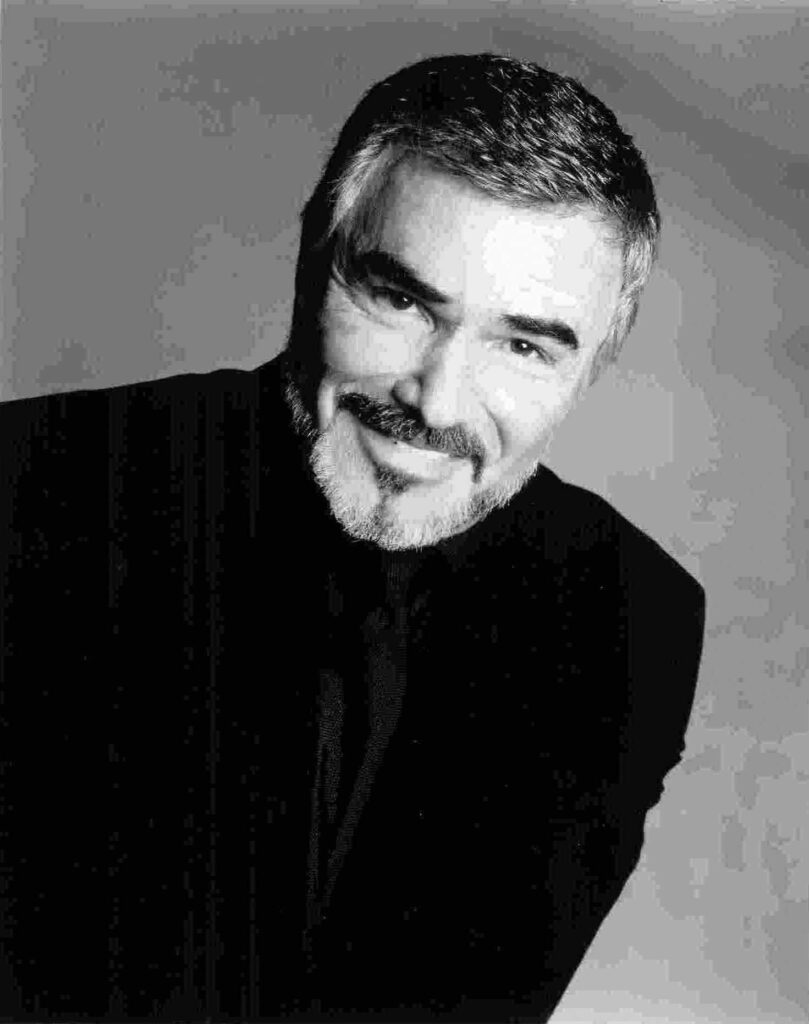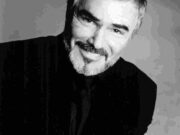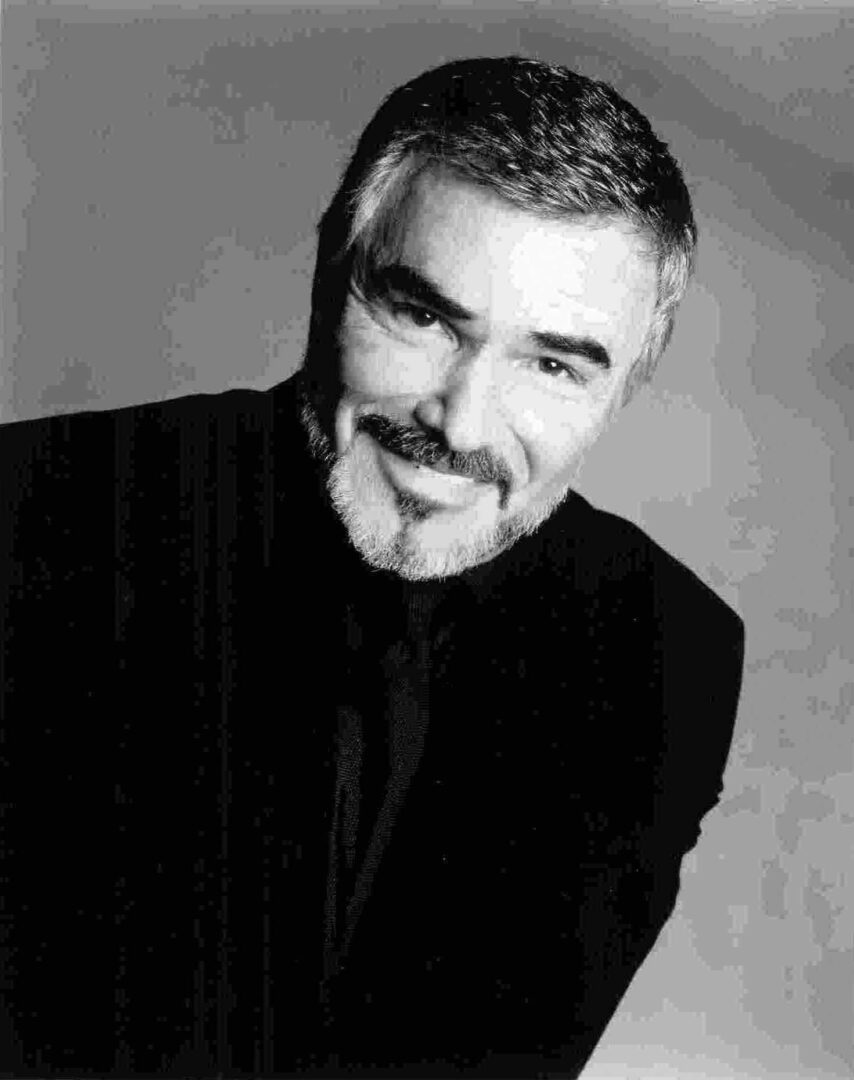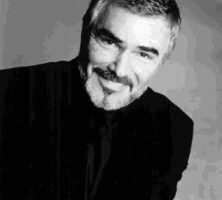Actor and director Burt Reynolds, one of America’s most recognized film and television personalities, made significant contributions to the film industry in Georgia. With nearly 100 films and 200 television episodes to his credit, Reynolds was the number-one box-office attraction for five straight years (1978-82), thanks to such films as Smokey and the Bandit and The Cannonball Run. During these years, Georgia became the number-three state in the nation, behind California and New York, for film production, largely as a result of Reynolds’s commitment to filming in the South.

Burton Leon Reynolds Jr. was born in Lansing, Michigan, on February 11, 1936, to Fern and Burton Reynolds. His mother was a nurse, and his father was a police officer. As a young boy, Reynolds moved with his family to Riviera Beach, Florida. While at Palm Beach High School, he made headlines as the school’s star running back, and his football talent later led him to play for Florida State University, where he was named All-Southern (1953) and First Team All-State (1954). Professional football teams were scouting the young halfback in 1955, when he was injured in a serious car accident. The crash ended Reynolds’s athletic dreams but marked the beginning of his acting career.
Early Career
After the accident Reynolds enrolled at Palm Beach Junior College. Encouraged by a professor, he read for the role of Tom Prior in the school’s production of Outward Bound. His portrayal of the sensitive alcoholic won him the Florida Drama Award (1956) and a scholarship to New York City’s Hyde Park Playhouse.
The young actor made his professional stage debut in the 1956 revival of Mr. Roberts. After a variety of small roles on both stage and television, Reynolds followed the East Coast production companies to California, where he was hired for a short time as a contract player for Universal Studios. Soon after being released from his contract, Reynolds was offered his first film role, the part of a southern evangelical minister in Angel Baby (1961). The following year he was cast as the half-Indian character Quint Asper on CBS’s Gunsmoke (1962-65). Over the next several years Reynolds, who claimed Cherokee ancestry, would be cast as a Native American in such projects as the film Navajo Joe (1966); the short-lived television series, Hawk (1966); and the film 100 Rifles (1969). He enjoyed such success playing Native American characters that he once told a reporter, “the only Indian I haven’t played is Pocahontas.”
Southern Filmmaking
Although Reynolds had made eleven movies before starring in the film adaptation of the novel Deliverance (1972) by James Dickey, his performance in that film as Lewis, a macho Atlanta businessman, signaled the beginning of his box-office popularity. Hailed as one of the year’s best films, Deliverance is the story of four suburbanites’ harrowing journey into Appalachian Georgia. Filmed on Georgia’s Chattooga River, Deliverance also marked the beginning of Reynolds’s devotion to making movies in and about the South.
The following year Reynolds was persuaded to play the role of a moonshiner in the film White Lightning after the filmmakers promised to shoot in the South. White Lightning, which was filmed in Arkansas, broke attendance records nationwide, and the film’s success encouraged Hollywood studios to make more southern films. In 1976 Reynolds both starred in and made his directorial debut with Gator, the sequel to White Lightning. Deciding to shoot Gator entirely in Georgia, Reynolds announced that “I have this violent urge to get behind the camera. . . . I want to say some nice things about the South.”
In 1974 Reynolds starred in The Longest Yard, which was filmed at the Georgia State Prison in Reidsville, in Tattnall County. In the film Reynolds portrays a former athletic star forced to compete in a life-and-death football game. Many inmates served as extras and helped to construct the sets, including a football field that was given to the prison after filming was complete. Governor Jimmy Carter played a key role in the orchestration of the project and, according to Reynolds, promised that he “would personally come in and take me out if anything happened.” The film, remade in 2005 with Reynolds in the role of Coach Nate Scarborough, was a tremendous success with both critics and audiences.
During the next few years, Reynolds continued his pattern of choosing southern-themed films that were often shot, at least partially, in the South. In the 1975 film W. W. and the Dixie Dance Kings, filmed in Nashville, Tennessee, he plays one of several country musicians hoping for success with the Grand Ole Opry. Smokey and the Bandit, which also features the Georgia musician Jerry Reed, was released two years later and remains one of Reynolds’s best-known and loved films. Filmed entirely in Georgia, the successful comedy was followed in 1980 by Smokey and the Bandit II, which was filmed partially in Georgia.
Reynolds’s next film, The Cannonball Run (1981), was shot almost entirely in Georgia, referred to as “Burt’s good luck state” by the director, Hal Needham. That same year Reynolds directed and starred in Sharky’s Machine. Filmed entirely in Atlanta, the movie features Reynolds as a narcotics officer investigating the murder of a prostitute in the city.
During these years, Reynolds starred in a number of other notable films, including The Man Who Loved Cat Dancing (1973); Semi-Tough (1977); The End (1978), which he also directed; Starting Over (1979); and The Best Little Whorehouse in Texas (1982), which was filmed mostly in Texas.
Despite being among the most commercially successful actors of his day, Reynolds’ films were not always a hit with critics, a fact he admitted with characteristic wit to the New York Times: “I think I’m the only movie star who’s a movie star in spite of his pictures, not because of them.”
Later Career and Philanthropy
In 1990 Reynolds returned to television as both producer and actor in the situation comedy Evening Shade. His portrayal of the small-town football coach Wood Newton won the actor an Emmy Award in 1991 and a Golden Globe Award in 1992. In 1997 Reynolds gave a critically acclaimed performance in the film Boogie Nights (1997), for which he received a Golden Globe for Best Supporting Actor and a nomination for an Academy Award.
Later projects include Mystery Alaska (2000) and The Hermit of Amsterdam (2001), and in 2005 Reynolds portrayed the character Boss Hogg in The Dukes of Hazzard, a feature film based on the 1980s television series and filmed in Louisiana. In 2007 he appeared in the independent feature film Randy and the Mob, which was written and directed by Georgia native Ray McKinnon and filmed in Atlanta and Covington. His final film, The Last Movie Star (2017), was written by director Adam Rifkin especially for Reynolds.
Reynolds was married and divorced twice, to actress Judy Carne and to actress Loni Anderson, with whom he adopted a son, Quinton. He also had high-profile relationships with singer Dinah Shore and actress Sally Fields. He published two memoirs, My Life (1994) and But Enough About Me (2015), recounting the ups and downs of his long career and his personal life.
Reynolds lived for many years in Florida, where he supported drama education. In addition to establishing the Burt Reynolds Institute for Theatre in Tequesta and a theater in Jupiter, he also founded a chair at Florida State University and donated to that university’s Asolo Theatre.
In 2000 Reynolds received the Children at Heart Award for his humanitarian work with children injured by the Chernobyl nuclear fallout in the former Soviet Union, and in 2003 he was honored at the Atlanta Film Festival, along with fellow actor and Georgia native Ossie Davis, for his contributions to the film industry in the state.
Though he struggled with health and financial issues, Reynolds continued to act and teach acting until the end of his life. He died in Florida on September 6, 2018.






